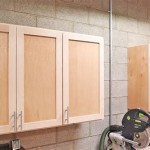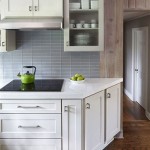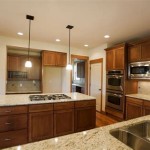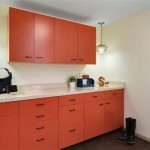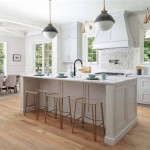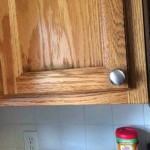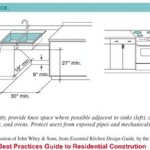Adding Drawers to Existing Kitchen Cabinets: A Comprehensive Guide
Kitchen cabinets, while providing essential storage, often lack the functionality and accessibility offered by drawers. Converting existing cabinet space into drawer space can significantly improve the organization and usability of a kitchen. This article provides a detailed overview of the process, covering considerations, preparation, construction, and installation.
The decision to add drawers to existing kitchen cabinets is frequently driven by the desire to improve storage efficiency. Items stored deep within cabinets can be difficult to reach, often requiring the removal of multiple items to access what is needed. Drawers eliminate this inconvenience, allowing for easy visibility and access to contents. Furthermore, drawers can be customized in size and configuration to accommodate specific storage needs, such as utensils, pots and pans, or dry goods. The aesthetic appeal of a kitchen can also be enhanced by replacing standard cabinets with drawers, creating a cleaner and more organized appearance.
Assessing Cabinet Construction and Available Space
Before embarking on the drawer conversion project, a thorough assessment of the existing cabinets is crucial. The type of cabinet construction will influence the installation method and the materials required. Common cabinet construction types include face-frame cabinets and frameless (European-style) cabinets.
Face-frame cabinets have a frame built around the cabinet opening, providing structural support. This frame can simplify the drawer installation process, as drawer slides can be directly attached to the frame. However, the frame also reduces the usable interior space. Frameless cabinets, conversely, lack a face frame, offering more interior space but requiring more precise drawer slide installation.
Accurate measurements of the cabinet opening, both width and depth, are essential. This will determine the maximum size of the drawers that can be accommodated. Consider also the height of the cabinet opening and the desired number of drawers to be installed. Ensure that adequate clearance is available for the drawer slides to operate smoothly. Measure the interior width between the cabinet walls (or the face frame stiles if present), the depth from the front of the cabinet to the back, and the height of the opening. These measurements will serve as the foundation for all subsequent steps.
Beyond just the dimensions, checking for obstructions within the cabinet is essential. Issues like plumbing, electrical wiring, or existing shelves must be addressed before proceeding. Relocating any obstructions, or designing the drawer arrangement to accommodate them, is a critical step to avoid complications during installation. Additionally, inspect the cabinet material itself for any damage or degradation. Weakened cabinet walls may require reinforcement before installing drawer slides.
Selecting Materials and Hardware
The selection of appropriate materials and hardware is paramount to the functionality and longevity of the added drawers. Common materials for drawer construction include plywood, solid wood, and melamine. Plywood offers a good balance of strength, stability, and affordability, making it a popular choice. Solid wood provides a more traditional aesthetic and can be more durable, but it is also more expensive and prone to warping. Melamine is a cost-effective option that is easy to clean but may not be as durable as plywood or solid wood.
Drawer slides are a critical component of any drawer system. They come in various types, including side-mount, undermount, and center-mount. Side-mount slides are typically the most affordable and easiest to install, but they may not provide the smoothest or quietest operation. Undermount slides offer a more refined appearance and often feature soft-close mechanisms, but they are more expensive and require more precise installation. Center-mount slides are typically used for smaller drawers and are less common in kitchen applications.
Consider the weight capacity of the drawer slides when selecting them. Kitchen drawers often hold heavy items, such as pots and pans, so it is important to choose slides that can support the intended load. Soft-close mechanisms are a desirable feature that prevents drawers from slamming shut, reducing noise and wear and tear. Full-extension slides allow the entire drawer to be pulled out, maximizing access to its contents.
Other hardware considerations include drawer pulls or knobs, which should complement the overall style of the kitchen. Screws, wood glue, and other fasteners will also be needed for assembling the drawer boxes and installing the drawer slides. Ensure that all materials are of high quality and compatible with each other.
Constructing and Installing the Drawers
The construction of the drawer boxes is a crucial step that requires precision and attention to detail. Begin by cutting the drawer box components (sides, front, back, and bottom) to the appropriate dimensions. The dimensions will depend on the internal size of the cabinet opening and the type of drawer slides being used. It is essential to account for the thickness of the drawer box material and the space required for the drawer slides. Precise measurements, accounting for the hardware specifications, are key to a successful installation.
Assemble the drawer boxes using wood glue and screws or finishing nails. Ensure that the joints are square and secure. Clamps can be used to hold the pieces together while the glue dries. The bottom of the drawer box can be attached using glue and screws or by inserting it into a groove cut into the sides, front, and back. The choice of method will depend on the desired level of durability and the aesthetic preferences.
After the drawer boxes are assembled, install the drawer slides. Follow the manufacturer's instructions carefully to ensure proper alignment and spacing. Side-mount slides are typically attached to the sides of the drawer box and the inside of the cabinet walls or face frame. Undermount slides are attached to the bottom of the drawer box and to mounting brackets installed on the cabinet floor. Correct alignment is essential for smooth and reliable drawer operation.
Once the drawer slides are installed, insert the drawer boxes into the cabinet. Check that the drawers slide smoothly and that they are aligned properly. If necessary, adjust the position of the drawer slides to achieve optimal performance. Attach the drawer fronts to the drawer boxes using screws. The drawer fronts should be aligned with the cabinet doors and other drawers for a consistent appearance. Finally, install the drawer pulls or knobs.
For frameless cabinets, the installation process is similar, but it may require the use of shims or filler strips to provide a stable mounting surface for the drawer slides. Frameless cabinets often have thinner side walls than face-frame cabinets, so it is important to use screws that are not too long to avoid penetrating the outside of the cabinet.
Consider adding drawer dividers or organizers to maximize the functionality of the drawers. These can be made from wood, plastic, or metal and can be customized to fit the specific storage needs. Drawer dividers can help to keep items separated and organized, while drawer organizers can provide designated spaces for different items.
After completing the installation, thoroughly inspect the drawers to ensure that they are functioning properly. Check for any gaps or misalignments. Open and close the drawers several times to ensure that they slide smoothly and do not bind. Make any necessary adjustments to the drawer slides or drawer fronts to achieve optimal performance and appearance.
Adding drawers to existing kitchen cabinets can significantly improve the functionality and organization of a kitchen. By carefully assessing the cabinets, selecting appropriate materials and hardware, and following the installation instructions, homeowners can transform their existing storage space into a more efficient and user-friendly area. The resulting increase in convenience and organization makes this a worthwhile home improvement project.
Addressing Potential Challenges and Considerations
While adding drawers to existing kitchen cabinets is a relatively straightforward project, several potential challenges and considerations should be addressed. One common challenge is dealing with uneven cabinet floors or walls. These imperfections can cause the drawers to slide unevenly or bind. Shims can be used to level the drawer slides and ensure smooth operation. Measure floor of the cabinet to make sure it is level both front to back and side to side.
Another challenge is dealing with cabinets that are not perfectly square. If the cabinet walls are not perpendicular to each other, the drawer box may not fit properly, or it may bind when it is opened or closed. Careful measurement and adjustment are required to compensate for these imperfections. A square can be used to ensure the cabinet is square and make sure all edges are properly perpendicular. Adjustments can be made using wood shims and screws.
For cabinets with inset doors or drawers, it is important to ensure that the drawer fronts are flush with the cabinet frame. This may require careful adjustment of the drawer slides or the use of shims to achieve the desired alignment. Inset drawers require higher precision during installation to maintain the aesthetic consistency.
Consider the overall style of the kitchen when selecting drawer fronts and hardware. The new drawers should complement the existing cabinets and décor. Choose drawer fronts that match the color and finish of the existing cabinets, and select drawer pulls or knobs that are consistent with the overall style of the kitchen. Consider the existing design features such as handles, cabinet door profiles and wood grain. Coordinating these to match creates a more cohesive and sophisticated aesthetic.
Proper ventilation within the cabinet should also be considered. Drawers can restrict airflow, which can lead to moisture buildup and mold growth. Ensure that there is adequate ventilation within the cabinet by leaving a small gap at the back of the drawer or by installing ventilation grilles. Poor ventilation can lead to mold and mildew growth, potentially damaging stored items and the cabinet itself. Good airflow helps maintain a dry and hygienic environment.
If the existing cabinets are old or damaged, it may be necessary to reinforce them before installing drawers. This can be done by adding plywood or solid wood to the cabinet walls or by installing metal brackets. Reinforcing the cabinets will ensure that they can support the weight of the drawers and their contents. Adding additional support will prevent future cabinet failure.
Safety is a paramount concern throughout the project. Wear appropriate safety gear, such as safety glasses and gloves, when working with power tools. Use caution when cutting and drilling, and follow the manufacturer's instructions for all tools and materials. Work in a well-ventilated area to avoid inhaling dust or fumes. Power tools can pose significant risks, so always prioritize safety. A clean and well-lit workspace will also help prevent accidents.
Adding drawers to existing kitchen cabinets can be a challenging but rewarding project. By carefully considering these potential challenges and considerations, homeowners can ensure a successful and long-lasting installation.

How To Easily Add Drawers Kitchen Cabinets Small Stuff Counts

My 9 Best Tips For Installing Cabinet Drawers Remodelando La Casa

My 9 Best Tips For Installing Cabinet Drawers Remodelando La Casa

How To Easily Add Drawers Kitchen Cabinets Small Stuff Counts

How To Convert Base Cabinet Shelves Drawers

How To Easily Add Drawers Kitchen Cabinets Small Stuff Counts

How To Install Drawer Pullouts In Kitchen Cabinets Ers

15 Unique Kitchen Drawer Design Ideas For Clever Storage Beautiful Homes
Made To Fit Slide Out Shelves For Existing Cabinets By A Shelf Costco

How To Convert Base Cabinet Shelves Drawers
Related Posts

